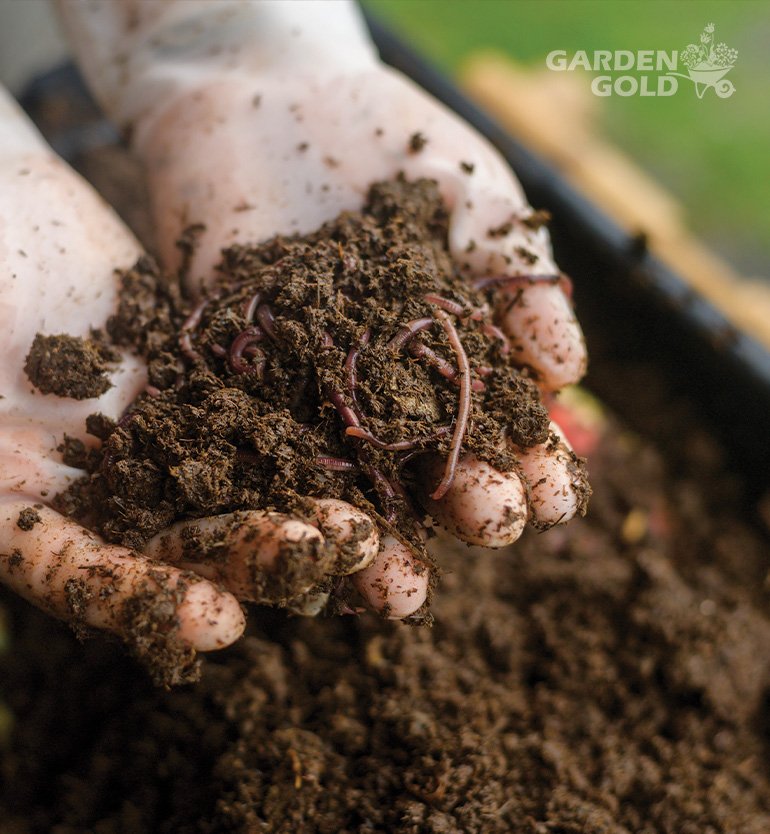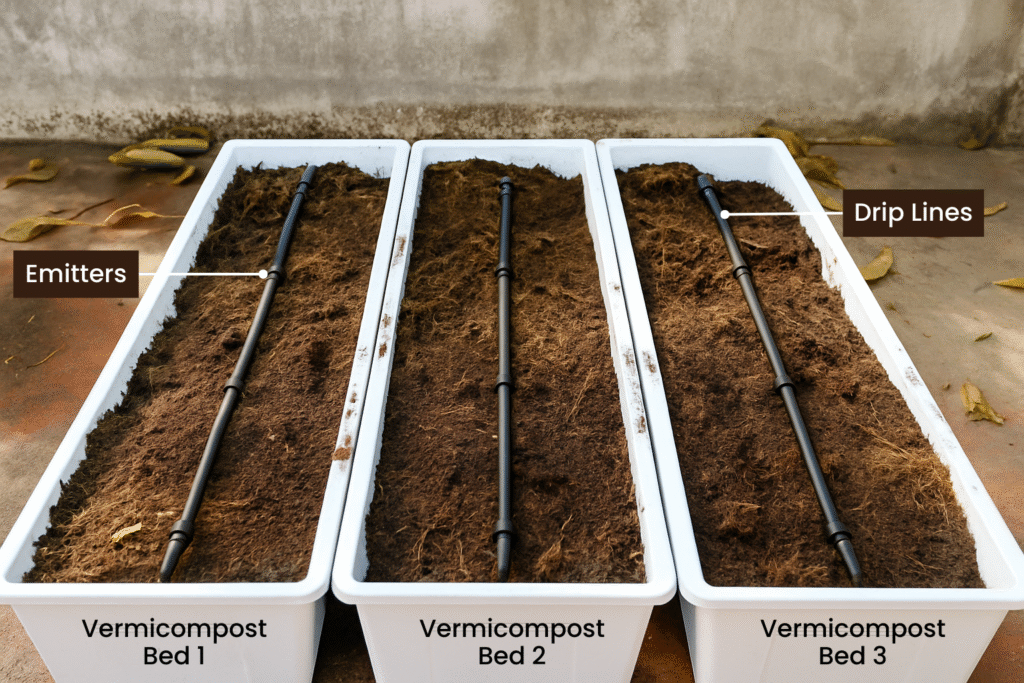
Moisture is the heartbeat of a successful vermicompost plant. Too little water can slow down the composting process, while too much can suffocate the worms and cause foul smells. That’s why maintaining consistent, balanced moisture levels is the key to producing rich, high-quality compost.
One of the best ways to achieve this is through drip irrigation.
Why Use Drip Irrigation for Vermicompost Plants?
- Consistent Moisture: Drip irrigation delivers water slowly and evenly across the beds, keeping the compost at the ideal moisture level (around 60–70%).
- Uniform Moisture = Faster Decomposition: Steady water distribution accelerates microbial activity, leading to faster and even decomposition.
- No Compact Beds: Gentle watering prevents compaction, keeping the vermicompost bed airy and loose.
- Moisture + Oxygen Balance: Balanced moisture also supports proper oxygen circulation, which is essential for worms and microbes, further speeding up decomposition.
- Water Saving: It uses 60–70% less water compared to manual watering methods.
- Labor Saving: Reduces the need for daily manual watering.
- No Disturbance to Beds: Prevents splashing or turning of beds during watering.
- Better Compost Quality: Uniform moisture ensures even decomposition.
How It Works in a Vermicompost Setup
- Water Source & Filtration – Use a clean water source connected to a filter to prevent clogging.
- Mainline & Sub-mainline Pipes – Supply water to different vermi-beds.
- Drip Lines / Dripperlines – Laid along each bed with low-flow emitters for gentle watering.
- Control Valves – Allow you to water different sections as needed.

Product Choices for Drip Irrigation
There are various drip irrigation options available in the market.
One popular choice among farmers is Netafim Drip Irrigation, known for its:
- Durable dripperlines
- Uniform water flow
- Reliable filtration and valve systems
Other brands and locally available drip systems can also be considered based on budget and scale.
Tips for Using Drip in Vermicomposting
- Frequency: Water 1–3 times daily depending on season (short cycles).
- Moisture Test: Compost should feel like a wrung-out sponge.
- Summer Cooling: Use light, frequent watering to reduce bed temperature.
- Optional Automation: For large-scale units, digital farming solutions can automate moisture control for hassle-free operation.
Conclusion
Whether you are managing a small-scale unit or a commercial vermicompost plant, installing a drip irrigation system can make your work easier, save water, and improve compost quality.
Netafim drip irrigation is one of the trusted solutions you can explore, along with other reliable systems available in the market.
With the right setup, your vermicompost plant will be more productive, efficient, and sustainable.
